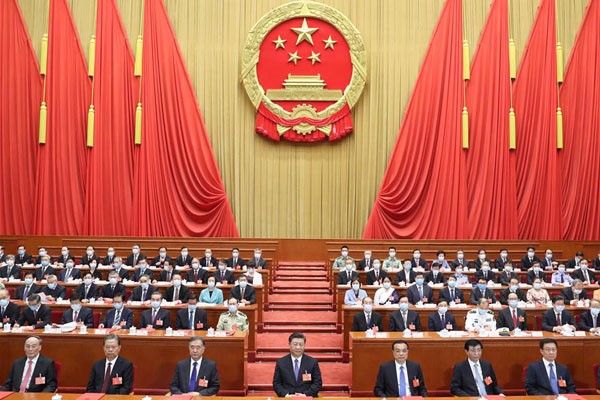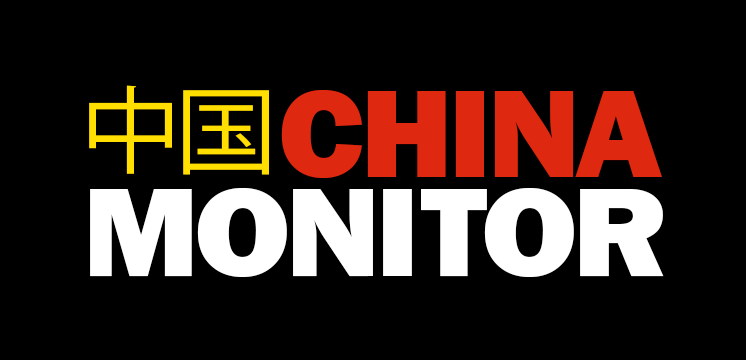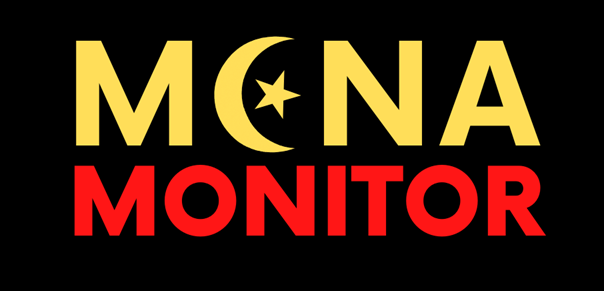
China Monitor is our brand-new program that analyses China’s economic and foreign policies. It also aims to predict the consequences of Beijing’s policy for the global economy, the EU as well as Central and Eastern European countries such as Poland.
Date: 10 March 2021
Author: Paweł Paszak
China’s Parliament is Debating on the Future of the Economy. Is the Middle Kingdom Facing a Slowdown?
March 5, 2021, marked the opening of the fourth session of the 13th National People’s Congress (NPC) of the People’s Republic of China (PRC), which will approve the Five-Year Plan for 2021-2025 on March 11. In the annual report, Premier Li Keqiang set a modest growth target of 6% and a budget deficit of 3.2%. Moreover, in his speech, the head of government announced that 11 million new jobs would be created in urban centers while research and development spending would be increased by 7% annually, which is expected to bring China closer to technological self-sufficiency. Additionally, it was announced that the retirement age would be raised and the demographic crisis would be addressed through the implementation of an appropriate strategy. Beijing must decide whether it would follow the path of low but more sustainable growth, or doubling its GDP by 2035 at the expense of increased debt and poor allocation of capital.

Adopting a non-binding declaration of 6% GDP growth in 2021 is a sign that Beijing is temporarily and slowly moving away from the pursuit of high performance at the expense of increased debt or wasting capital on investments of dubious profitability. The adopted target is much lower than the most notable international financial institutions (the IMF, the World Bank) forecasted – they expected that China’s GDP will grow by around 8%. However, if the Chinese authorities strive to achieve an actual balanced growth and build it on a solid foundation, they would have to reduce the pace of development even further. Michael Pettis, professor of economics at Peking University, argues that improving the growth rate and basing it on “good” sources, i.e., domestic consumption, exports and business investment, would force the country to lower the forecasts to about 3% GDP growth annually. This is far below the threshold required to double GDP by 2035, as semi-officially announced by Secretary Xi Jinping in 2020. Thus, the authorities in Beijing may seek to double GDP at the expense of further economic imbalances, or implement plans concerning sustainable and high-quality growth, at the expense of a poor but more realistic performance of the economy.
The previous model of setting GDP growth targets is being abandoned as a result of the deteriorating financial system. According to the Institute of International Finance (IIF), China’s debt level increased from 302% to 318% in Q1 2020 and it could have reached as much as 335% in Q2. Diana Choyleva, chief economist at Enodo Economics, highlights that China is about to repeat the Japanese experience and it is impossible to maintain such a pace of debt growth.
Local authorities, which are trying to meet unrealistic growth targets imposed by Beijing, are responsible for the lion’s share of the debt build-up since 2007. It was frequently used to finance massive infrastructure investments, accompanied by several cases of embezzlement and corruption. However, local administrations were protected by the central government, which handled the repayment in case of insolvency. Territorial communities were mindful that they could receive support from the central government, which encouraged them to extensively take on risky debts as well as misallocate resources. Now, their collective debt, after converting most LGFV (local government financing vehicle) loans into municipal bonds, represents around 10% of GDP, or about CNY 10 trillion (USD 1.5 trillion). Yet, the scale of this phenomenon varies significantly in each province. The funds raised that way allowed for a rapid GDP growth, but have made the accomplishment of set goals dependent on increasingly risky loans. Since 2016, however, the efforts of the central government to curb these practices have become noticeable. Local authorities will now be assessed not only on the basis of the achieved growth rate, but also their debt.
Support Us
If content prepared by Warsaw Institute team is useful for you, please support our actions. Donations from private persons are necessary for the continuation of our mission.
A similar problem exists in the case of less profitable state-owned enterprises (SOEs), which, despite mounting debt and falling profits, have been supported by the authorities in order to prevent the loss of influence of the Party, mass layoffs and market instability. Since 2016, a shift in attitude of the authorities has been observable – they allowed a small number of bankruptcies system-wide to put pressure on other companies. In 2020, Yongcheng Coal & Electricity Holding Group and Tsinghua Unigroup were unable to repay debts, but the central authorities did not intervene, stating that they are slowly moving away from unconditional bailouts of unprofitable state-owned enterprises.
Inflation of risky loans within the framework of the so-called shadow banking (a parallel banking system) still remains a problem. According to S&P Global Markets, this sector is valued at more than CNY 20 trillion (USD 3.1 trillion), although Moody’s data estimates it at as much as CNY 59 trillion (USD 9.1 trillion). The clients include mainly those who would not be able to get a loan on regular terms. On the one hand, this phenomenon injects capital to the market, but on the other hand, it raises the risks associated with borrower’s insolvency. The situation is further complicated by the growing importance of electronic payments, 90% of which are controlled by Chinese tech giants – Alibaba and Tencent. In 2020, authorities in Beijing announced that they would fight against monopolies and “disorderly expansion of capital,” targeting increasingly powerful digital corporations. According to the People’s Bank of China, consumer loans of Chinese banks acquired through technology companies reached CNY 1.43 trillion (USD 213.71 billion) at the end of June 2020.
The long-term impact of rising debt on the state of China’s economy and its superpower ambitions remains unknown. Thomas Orlik, in his publication entitled “China: The Bubble That Never Pops,” highlights that there is a consensus that high levels of debt and its declining quality lead to higher servicing and repayment costs, which has a negative impact on the economy. This influence is compounded by misguided and economically unjustified infrastructure investments, often accompanied by corruption. At the same time, however, public debt is mostly funded by domestic savings denominated in yuan, ruling out a foreign-induced debt-currency crisis. Nevertheless, Beijing will have to balance economic and political interests between 2020 and 2030. The recovery of the economic system would require tighter financial discipline, permission for less competitive state-owned enterprises to go bankrupt and a reduction of the credit-to-GDP ratio. This type of rehab would entail a crisis and numerous political risks for the Party associated with it. If the current situation is left unaddressed and no appropriate measures are taken, it is likely that it would lead to a crisis in the long term.
_________________________________
All texts published by the Warsaw Institute Foundation may be disseminated on the condition that their origin is credited. Images may not be used without permission.

















